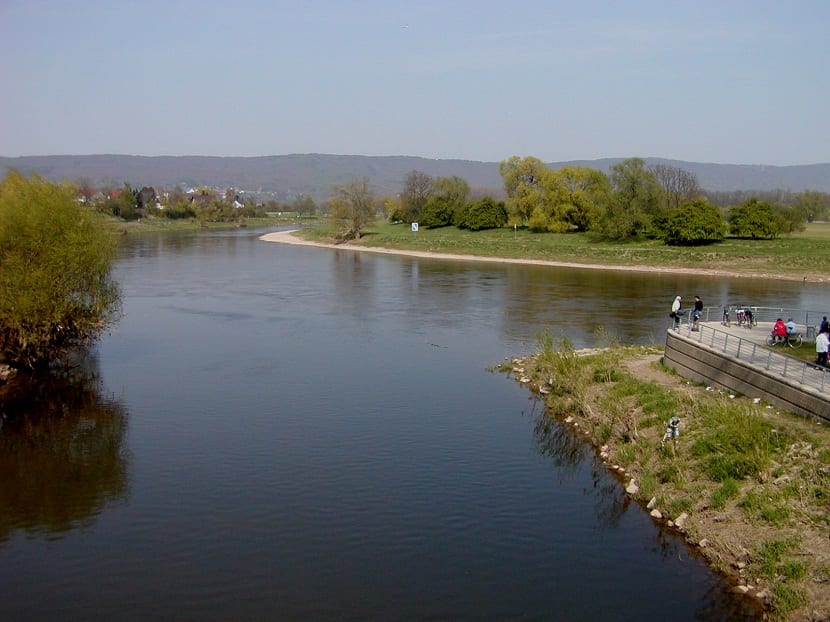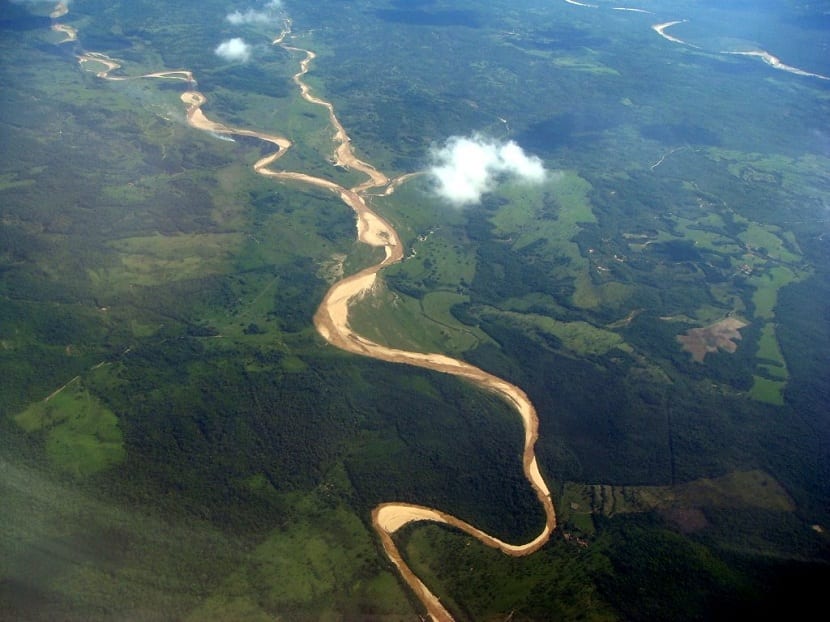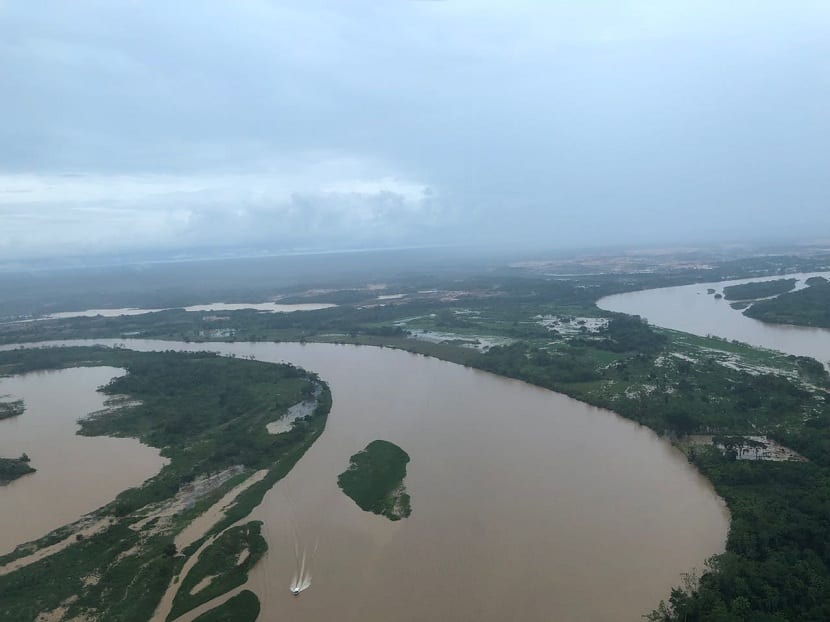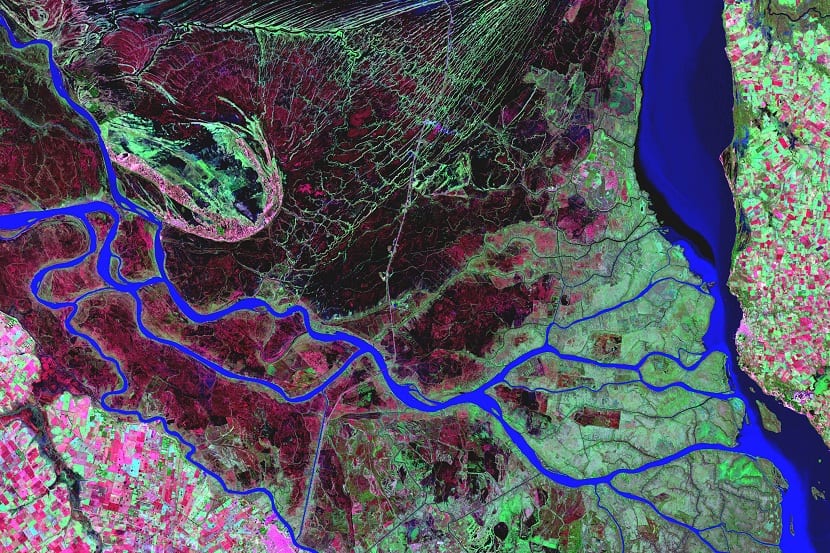
When we are doing hydrographic studies we take into account the union of some rivers with others. Initially, when one or more rivers join, it is considered as tributary that river that has less importance. However, this has many exceptions as we will see throughout the article.
In this article we are going to tell you what a tributary is and what characteristics are considered to name a river that is a tributary of another.
What is a tributary

When one or more rivers join, normally, the smaller one is considered a tributary. The importance of one river or another lies in the size of the flow, the length or the surface of its account. The one with the least flow, length or a smaller count will be the tributary at a river junction. However, this is not always the case. We can see some examples such as the Mississippi River, whose tributary is the Missouri River and it is 600 kilometers longer and has a basin three times as long.
We also find the Miño and Narcea rivers that are shorter and with less flow than their tributaries, the Sil and the Nalón, respectively. All these exceptions make us see that the importance of a river is almost always a matter of toponymy, that is, there is no irrefutable logic about which river is the main one and which is its tributary.
The terms used to indicate the status of the tributary in relation to the main flow are usually: Right or left tributary, left or right tributary. In this way we can know in which part the river of less importance is incorporated to that of greater. What these terms do is define, from the perspective of the waters that it gave, the lower slope in relation to the direction in which the river course is moving.
How are tributaries arranged?

When we talk about a main river and all its tributaries, we have to sort from those closest to the source of the river to those closest to the mouth. They are usually arranged in a hierarchy. We have first-order, second-order, and third-order tributaries. The first-order tributary is the smallest in size. The second order is the one that is composed of two or more tributaries that accompany the first order and combine to form it. The third order is the most important and largest.
Another way to order and organize the tributaries of a river is from the mouth to the source. In this way we will be giving it a dendritic structure. A more applicable way to use both methods is to divide them by sides: tributaries that arrive from the left or right as long as their head or source is in the direction of the mouth of the main river. This is a way of classifying the tributaries that have to do with the fluvial asymmetry of the rivers at the confluence of two or more of them. There are some rivers that flow into the main river after having traveled long distances.
It has always been said that the source of a river begins from the mountain and ends in the sea. This need not always be the case. In the case of rivers that are tributaries of other main ones, we find that the mouth does not end in the sea but in the bed of another river that feeds the flow. It is common to see rivers in the northern hemisphere whose main bank is to the left and forms a very sharp angle with their mouth. Most of the rivers that are tributaries of another by the right bank form an angle almost always right. All the exceptions are due to the characteristics of the relief.
What is an effluent?

Just as we have defined what an effluent is, we must say what an effluent is. It is precisely the opposite. It is a natural or artificial diversion that flows out of the main current of a larger river through a smaller one. In most cases, when a natural effluent occurs, it occurs in areas close to river deltas. There are also cases in which, because of the relief, it can also occur in other sections of the river. Some examples of them are the Casiquiare river with respect to the Orinoco river.
It is more common to see effluent is of artificial origin in order to take advantage of the water for agriculture and livestock. This creates a channel for water supply in regions that are relatively remote from the main riverbed.
Research and studies
In recent years, the possibility that the Amazon River may have some tributaries at underground levels has come to light. These tributaries would date from many years ago that would travel kilometers. There is a study carried out by scientists in Brazil that has come to the conclusion that many, many years ago there was an underground river of about 6000 kilometers in length that is located thousands of meters underground.
These studies will be carried out in different oil wells that have been used since the 70's. Thanks to the drilling it has been shown that there are movements 4000 meters below the river. This underground river was called Hamza and it was named in honor of the director of all the investigations and that, in turn, may be the one who gave the idea that there could be movements of water underground. He made sure to confirm the existence of this river and it can be said with complete certainty that the entire Amazon rainforest is fed by water from two basins: the Amazon River and the Hamza River.
As you can see, the tributaries of a river do not have to be strictly smaller, with less flow or a smaller account size, but rather depend on other conditioning factors for this. I hope that with this information you can learn more about what a tributary is and how important it is for hydrogeography.